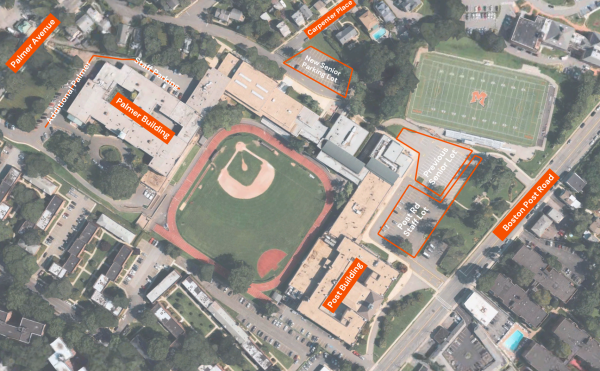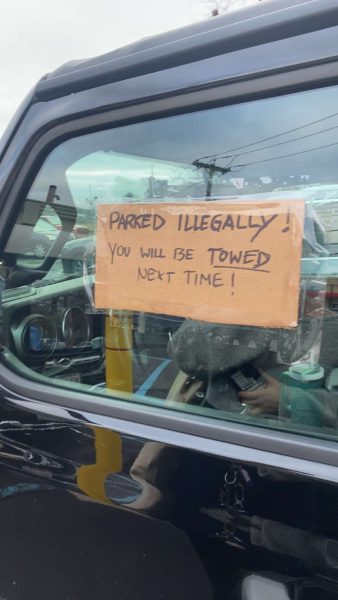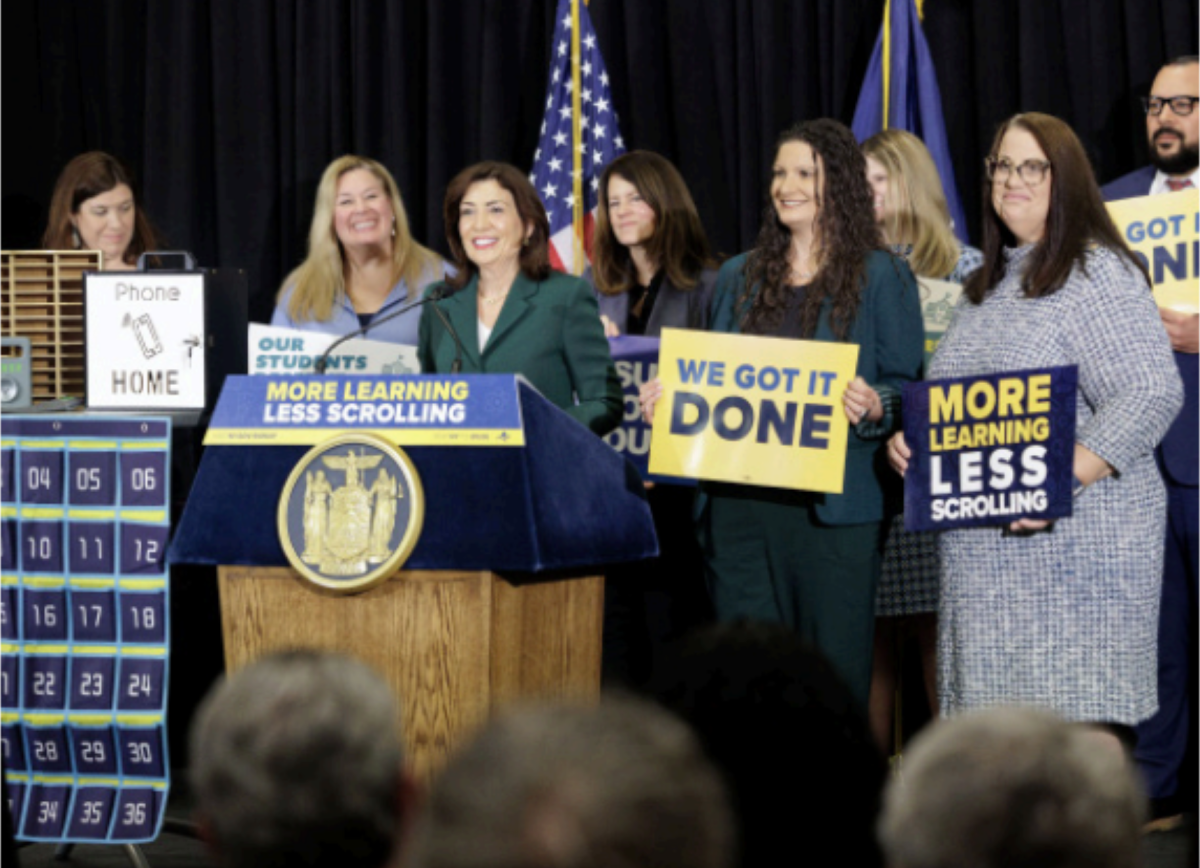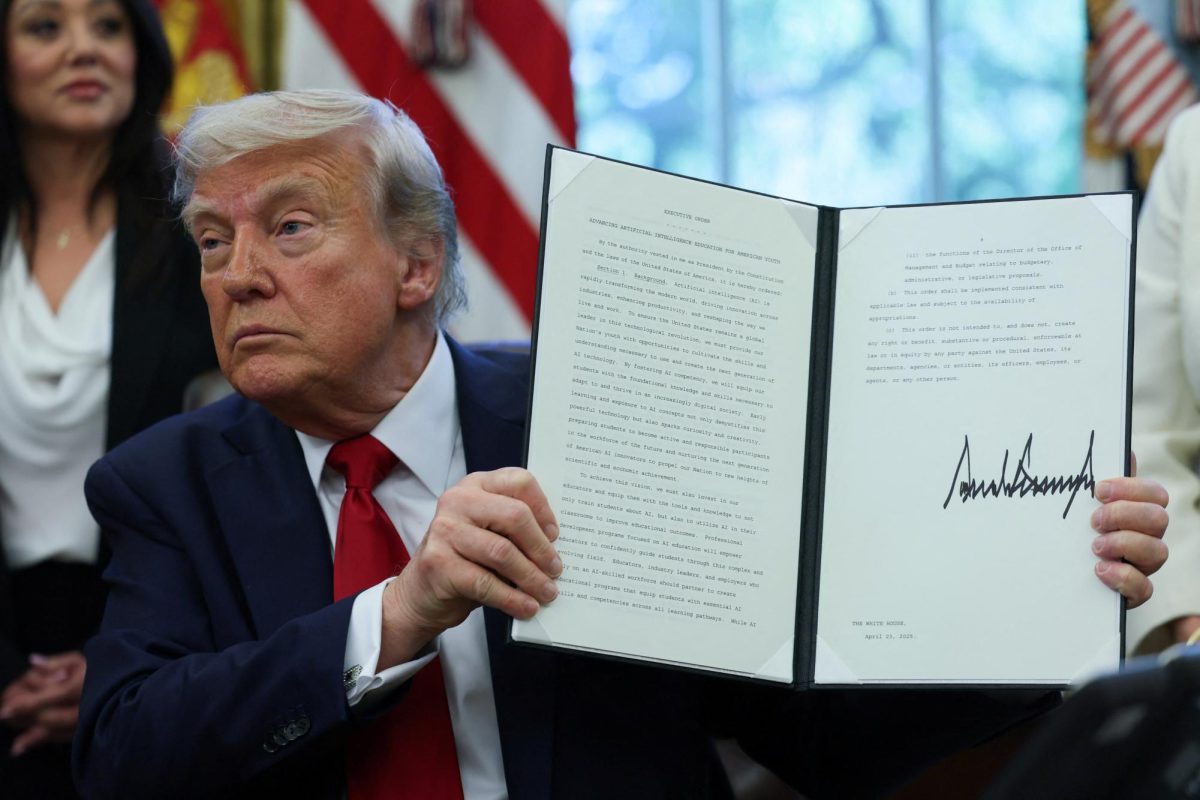“If you solve the parking situation, they will build a statue of you,” says Lina Carolini-Cannavo, recalling longtime teacher Evan Madin’s humorous advice as she began her role as assistant principal at Mamaroneck High School (MHS). The Globe spoke with Cannavo in late November, as part of an effort to understand why parking on and around campus elicits so much tension among students, faculty, and administration.
Cannavo is now principal, and she’s been forced to become an expert in student and staff parking at MHS. This year, building and central administration introduced new changes, among them reducing senior parking spaces and implementing a lottery system for parking passes for the senior class.
Previous to the 2023-24 school year, the 61 parking spaces that made up Mamaroneck’s senior parking lot, dubbed “SLOT,” were situated next to the athletic field, on the right side of MHS’s main Post Road parking lot. Spots were first come, first serve, creating a famed culture among seniors: students would arrive as early as 7:00am, with most of the lot being filled by 7:15am; many would then sit in cars together for 40-60 minutes awaiting first period at 8:00am. These 61 spaces represented the only student parking available on campus and sat adjacent to the Post Road staff parking lot.
Cannavo said that despite camaraderie and shared senior culture noted by some students, the 61 first come, first serve spaces in the previous senior parking lot (compared to 200 passes given out to any senior who applied in 2023) created an environment Cannavo called “The Hunger Games.” To Cannavo, the old system presented an “equity issue…shared to us many times over the years” in that “roughly the same students are always the ones that get the spots…because they’re able to get here early.” If students have early morning classes, they get a space “automatically.” If students have to drive siblings to school, they couldn’t get a spot, or participate in the senior parking culture.
Students who did not arrive on time sought parking on Boston Post Road, in the parking lots of nearby local businesses, or, in some cases, in staff-designated parking. By the end of the 2022-2023 school year, the ten staff spots closest to the senior parking spaces had effectively become senior parking, with students taking spots long before most staff arrived at MHS. “Handling this lot became untenable,” says Cannavo. “Students would be parking in staff spots, and teachers would be late for classes.” To curtail such issues, the central administration directed security services to paste neon green stickers alerting that their vehicle was parked illegally.
This brings the parking issue to this current school year, and how the administration could try a different take. So, “last spring, [when central administration] had alerted us that they were increasing the staff,” Cannavo expected tension and frustration from students. She made clear that MHS “has an obligation to have enough parking for people who work here, full-time or part-time” on campus. That includes “all of the central administration offices: the curriculum and instruction office, the human resources office, the technology offices, the buildings and grounds office, the superintendents, student support services, among others.” Cannavo continues, “Many students don’t realize” that these district-wide offices are housed at MHS. And, despite staff spaces frequently appearing empty, a point of frustration for students, Cannavo says those spaces are necessary for traveling administrators who work at multiple district schools, district teachers doing day training at Mamaroneck High School, or even college representatives visiting students at MHS’s College Information Center. “All different stakeholders” require parking spots at MHS: “you’re going to see a fluctuation constantly” of occupied parking spaces.
Due to the increase in staff, Cannavo said another row of 15 parking spaces would have to be removed from the previous senior parking lot, which had already lost a row of spots three years before.
Taking this into account, Cannavo said she and central administration examined MHS’s campus in detail over the 2023 summer break. Working with administrators of Buildings and Grounds, she considered removing trees, or even replacing the lawn in front of McClain Auditorium with parking spaces. In the end, Cannavo argued that a change of that magnitude “would completely change the school culture…even aesthetics. There are students that meet there…during lunch,” begging the question “Do the risks outweigh the benefits?”
Upon officially deciding that spaces would be removed, Cannavo convened a “purely advisory” committee of students, parents, faculty, staff, and central administrators. While the decision would ultimately be up to administration, with district-wide leaders pushing for many of the ultimate changes, Cannavo looked to this committee to “take into consideration everyone’s perspectives” in making changes to parking at MHS. The decision? Senior parking would shift from a portion of the Post Road lot to occupy the entirety of the smaller parking lot off Carpenter Place, next to the Palmer Gym. The staff spaces in this lot would shift down to the Post Road lot, and senior parking passes, which used to be given out to any seniors who applied, would be given based on a lottery system. New passes would be given out each quarter, and a senior could only receive a pass for one quarter of the school year.

In building the committee, Cannavo said students were invited to join from Student Council, including MHS President Saliou Seck (‘24). Seck told The Globe that the committee was briefed on the parking changes, and he, among other students, recognized that seniors having their own space, completely separate from staff parking, was a benefit in preventing students from parking in staff spaces. Assistant Principal Susan Natale, who manages student parking, confirmed Seck’s hypothesis, saying that administration has seen a “tremendous improvement” in students parking in staff spaces as compared to last year. Natale added that “having campus supervisors constantly [monitoring] the spaces” was “not a good use of their resources.”
Empathizing with students, Seck added that the parking switch may have appeared to have happened “quickly,” and wished the administration had given the student body “warning a year prior” to help ease tension. However, Seck noted that while “at the beginning, people found it very unfair that the parking system was lottery-based, as time went on, people just got used to it.”
Seck’s ultimate view: “It’s not that deep. It’s only 20 spots that are missing, and people don’t notice them.” But, opinions on the change tend to vary among students. Josh Gottesman (‘24) and his twin Zach both received passes in the first and second quarter lottery respectively, meaning Gottesman has parked in the senior lot since the first day of school. He agrees with Seck, noting that “it’s nice being able to come to school at 8:05,” and adding that “it also works out for my friends who don’t have [a pass] because they carpool with me.” Natale said she’s walked the lot and has “seen a lot of [the] carpooling” Gottesman mentions. Paisley Flamenbaum (‘24) also carpools with two friends, but none of the three have received a parking pass, first or second quarter. The trio parks behind Clara Nails and “has to walk a little bit to get to the school.” Flamenbaum suggested that the parking pass system should more “officially reward students for carpooling” and saving space.

Cannavo said the committee, like Flamenbaum, also wondered about “putting considerations into the lottery.” That could look like a “point system” that would give students a “boost” in the lottery based on predetermined characteristics, such as: living farther from campus, being an in-season athlete, or frequently carpooling with others, but that idea was scrapped due to logistics and equity concerns, with Cannavo noting that “that problem wasn’t solved with the old system either.”
Lottery boosts may be something worth considering for Cannavo and Natale as they continue to monitor the new parking system. With the school day ending at 3:00pm this year, rather than 2:40pm, time spent getting sports gear after class is a much more significant burden for athletes. Corey Sherman (‘24), a fall athlete, said his first-quarter parking pass “allowed [him] to sleep an extra 30-45 minutes, made it easier to get to practice on time, and allowed [him] to keep stuff in [his] car that [he] could get at any time of the day without a 10-minute walk” to an off-campus parking spot. Accordingly, an on-campus parking space would likely be more useful for Sherman in the first quarter as opposed to second quarter, when Sherman doesn’t play a school sport.
Still, Sherman prefers the new system. Flamenbaum, mentioned earlier, prefers the old, noting that she “always looked forward to getting a spot in the senior lot as a freshman and sophomore, so this new system is definitely worse to me.” Gottesman said, “If I didn’t have a twin, I would prefer the last system.”
What do teachers think? Natale said that teachers have reported an improvement in their parking experience for the Post Road lot, facing far fewer student-occupied spots. That experience seems different for Palmer teachers, including Maria Fairbairn, an AP English Literature teacher whose classroom is in Palmer. Home to all Humanities, Arts, and Foreign Language Classrooms, Palmer houses almost half of the MHS faculty. In years prior, the Carpenter Place Lot, now senior parking, constituted a vast number of parking spaces for Palmer teachers, and Fairbarin would park there regularly. Aside from this lot, Palmer teachers who wanted to park close to their classrooms could only park in spaces that narrowly snaked the side of the Palmer building. Fairbairn said that despite a 10-minute later start time this school year, Palmer teachers “still have to get here earlier,” as early as 7:30, to get a spot on MHS’s campus that is near their classrooms. Now that the Carpenter Place lot is student parking, not only does Palmer have fewer spots, but, according to Cannavo, Building and Grounds staff, who arrive at MHS as early as 6:30am and parked in this lot previously, need to park in many of the limited remaining spots alongside the Palmer building. It seems that the loss of one parking lot became a burden for another, leaving Fairbairn, and other Palmer teachers, forced to park in Post despite arriving 30 minutes before they are expected at work. For Fairbairn, “If [she] parks in Post, [she will] get stuck in all that extra traffic.” For Palmer teachers in general, the change in senior parking interrupted a system that worked quite well. Cannavo acknowledged the shift as an “unfortunate…game changer” for Palmer teachers, but it is unclear if any remedy for this challenge is possible.
“If you think about it, [MHS] is relatively small for the amount of people that come and go onto this campus,” says Cannavo. “At this point, I think three quarters of [students] that applied…will have a spot at some point,” Natale added. “That’s not what would have occurred with the old system.”
In the end, “No system will make everybody happy,” Cannavo noted, hoping that stakeholders will be better informed about the parking challenges we all face as we continue to adapt to a growing student and staff population on campus.









